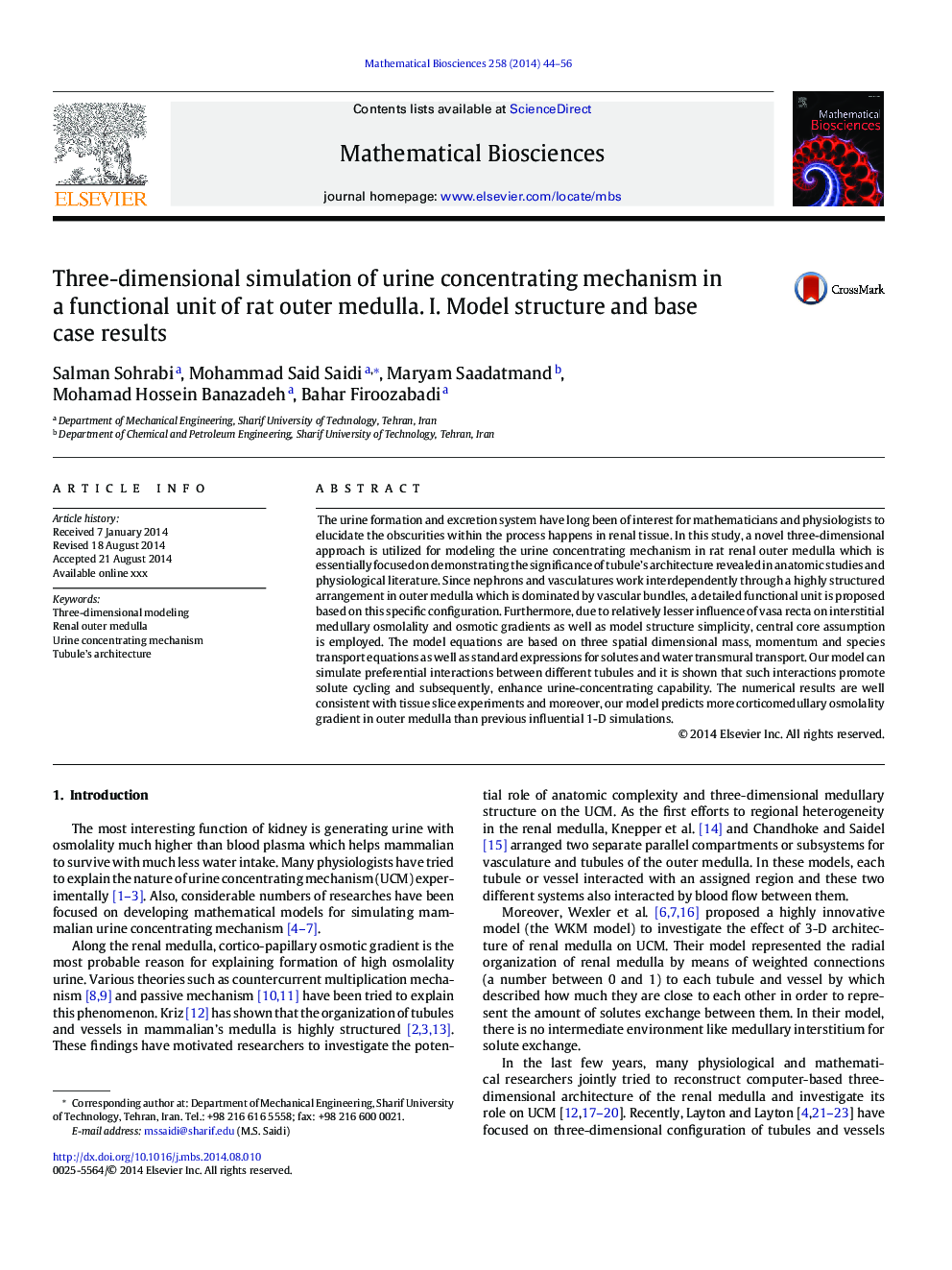| Article ID | Journal | Published Year | Pages | File Type |
|---|---|---|---|---|
| 6372016 | Mathematical Biosciences | 2014 | 13 Pages |
Abstract
The urine formation and excretion system have long been of interest for mathematicians and physiologists to elucidate the obscurities within the process happens in renal tissue. In this study, a novel three-dimensional approach is utilized for modeling the urine concentrating mechanism in rat renal outer medulla which is essentially focused on demonstrating the significance of tubule's architecture revealed in anatomic studies and physiological literature. Since nephrons and vasculatures work interdependently through a highly structured arrangement in outer medulla which is dominated by vascular bundles, a detailed functional unit is proposed based on this specific configuration. Furthermore, due to relatively lesser influence of vasa recta on interstitial medullary osmolality and osmotic gradients as well as model structure simplicity, central core assumption is employed. The model equations are based on three spatial dimensional mass, momentum and species transport equations as well as standard expressions for solutes and water transmural transport. Our model can simulate preferential interactions between different tubules and it is shown that such interactions promote solute cycling and subsequently, enhance urine-concentrating capability. The numerical results are well consistent with tissue slice experiments and moreover, our model predicts more corticomedullary osmolality gradient in outer medulla than previous influential 1-D simulations.
Keywords
Related Topics
Life Sciences
Agricultural and Biological Sciences
Agricultural and Biological Sciences (General)
Authors
Salman Sohrabi, Mohammad Said Saidi, Maryam Saadatmand, Mohamad Hossein Banazadeh, Bahar Firoozabadi,
